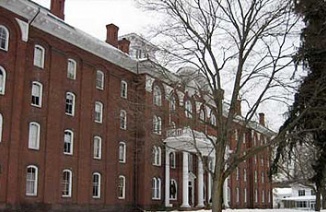关于SAT考试部分的复习,真题也是大家复习的必备资料。因为SAT考试包含了阅读和数学,以及写作。想要全面的提升几个科目的内容,我们还是要利用真题来备考。因此下面小编为大家整理了详细的内容,供大家参考!
题目:How To Increase the Number of Women Winning Nobel Prizes
作者:By Meredith Wadman Oct. 24, 2013 Time
1. The mother of tweens was folding laundry at 5 a.m. before going to an early spinning class when the phone rang. It was October 2009 and Carol Greider, a biologist at Johns Hopkins University, picked up and heard a voice from Stockholm. She had won that year’s Nobel Prize in medicine.
2. Unfortunately, Greider remains a rarity in the pantheon of Nobel scientists. And that’s partly because we haven’t done enough to help young female scientists balance the demands of academic research with the pull of family responsibility. That needs to change.
3. Admittedly, today’s situation is better than it was when Greider entered grad school in the early 80s, never mind in the dark days of the preceding decades. Then, when women were scarcely to be found at undergraduate lab benches, the results in the rarefied reaches of Stockholm couldn’t help but be dismal. Since the awards were launched in 1901, two physics laureates have been women: Marie Curie in 1903 and Maria Goeppert Mayer in1963. In chemistry,four of the 165 winners have been women. (Marie Curie was one of them, in 1911;she is the only woman to have won two Nobels.) Women have won 5 percent of the coveted awards in physiology or medicine. And it was 2009 before Elinor Ostrom, of Indiana University and Arizona State University, became the first-ever female laureate in economics.
4. In fact, 2009 was something of a banner year for women — Greider shared her award with her mentor, Elizabeth Blackburn, of the University of California at San Francisco; and Israel’s Ada Yonath shared the prize in chemistry. Since then, men have continued to sweep the science awards.
To be a female Nobel winner has not only required brilliance, but also preternatural determination in the face of cultural, social and political obstacles. The Italian neurologist Rita Levi-Montalcini secretly conducted experiments in her bedroom in Mussolini’s Italy. Francoise Barre-Sinoussi, the Parisian who co-discovered the AIDS virus – and whose father thought a women’s place was in the home –was in the lab on her wedding day. Her fiancé had to call her to remind her to turn up at the ceremony. Barbara McClintock, the U.S.geneticist who won the prize in 1983, was nearly prevented from attending college by her mother. She was afraid higher education would make her daughter unmarriageable.
5. All of this was decades ago, before recent campaigns to encourage more young women to choose STEM (science, technology, engineering and math) careers;and, in the US, before the Civil Rights Act, affirmative action and Title IX.What’s the excuse in 2013?
以上就是关于“

















